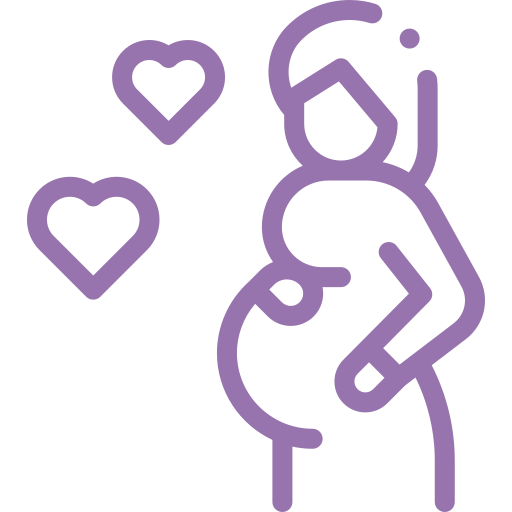What is the placenta?
The placenta is an important organ that grows in the womb (uterus) during pregnancy. It supplies the baby with oxygen and essential nutrients from the blood. Besides, it plays a key role in hormone production and protects the developing baby against bacteria and infections. This is why an issue with the placenta can be dangerous and result in death for both the mother and her baby.
The placenta usually attaches to the top or side of the womb wall and connects to the child through the umbilical cord. However, in some cases, it may grow or attach to the womb in a way that can result in several health complications.
Possible risk factors
Factors that affect the health of the placenta include:
- high blood pressure (hypertension)
- ethnicity
- history of placental issues
- maternal substance abuse like cocaine use
- history of smoking cigarettes
- multiple gestation pregnancy
- abdominal trauma caused by a fall or blunt trauma
- maternal age since woman older than 40 are more likely to have placental issues
- history of uterus surgery like a C-section
- maternal blood-clotting disorders
- premature rupture of membranes since placenta issues are more likely to result when the amniotic sac bursts too early.
Placental complications
There are many complications that can interfere with the placenta. Some of the most common ones include:
Placenta previa
This is a pregnancy condition in which the placenta lies very low in the uterus, completely or partially covering the cervix.
It occurs in 1 in 200 women during the last trimester of their pregnancy. However, placenta previa may go away on its own as the pregnancy progresses.
Placenta accreta
Placenta accreta occurs when the placenta grows very deeply into the wall of the womb. This may result in heavy blood loss during or following childbirth and can lead to death.
Placental abruption
This is when the placenta detaches from the wall of the uterus before childbirth. It can cause bleeding and prevent the growing baby from receiving all the essential nutrients. In certain cases, premature delivery may be required.
Placental insufficiency
This is a complication in which the placenta does not function well during pregnancy, preventing the baby from getting enough oxygen and nutrients. Placental insufficiency may affect the development of the fetus.
Retained placenta
In this case, the placenta remains in the womb after delivery because it is still bonded to the uterus or obstructed by the cervix. This condition can result in blood loss or infection and can lead to death.
What is normal?
Normally, the placenta attaches to the side or top of the womb and connects to the child via the umbilical cord. A normal placenta usually weighs around 700 to 800 grams when the baby is born.
During a natural birth, the placenta also comes out through the vagina within 5 to 30 minutes after delivery. This is referred to as the 3rd stage of labor. But if you undergo a cesarean operation, the doctor will take out the placenta together with the baby.
What is not normal?
At times, the placenta does not develop as expected. This may impact the baby’s health and development and result in several complications during childbirth.
Placental insufficiency is what made Dr. Courtney Townsel from Michigan Medicine, to be interested in researching high-risk pregnancies. As a first-year doctor, she was very watchful during her first pregnancy at the age of 27. Everything seemed to be going on well until week 34 when she discovered that her baby was not developing properly and that the fluid surrounding her baby was very little. Some pregnant women may realize that their baby is not moving as frequently as they should. In certain cases, the only sign of placental insufficiency is the death of the child.
How will I know if there is a problem with my placenta?
There are signs that could suggest if something is wrong with your placenta. So, it is important to watch out for these signs when you are pregnant. Sometimes, you may not even know there is a problem, and it is your doctor that detects the issue during routine ultrasounds and antenatal tests.
Below are common signs that something isn’t right with your placenta:
- Womb contractions
- Light or heavy vagina bleeding, based on the particular problem.
- Pain in the back or belly
While some women with placenta issues may experience bleeding but no pain, others may not bleed but experience sudden and intense pain in the abdomen. Make sure to seek immediate medical attention if you have any of these symptoms.
Low-lying placenta
Your womb grows bigger as your pregnancy progresses, and this may interfere with the position of the placenta. Usually, the area where the placenta attached to the womb moves upwards, away from the cervix. If the placenta lies low in the uterus, is close to or covers the cervix, it can obstruct the baby’s passage out of the womb. This is referred to as placenta praevia or low-lying placenta. It occurs in 1 out of 200 births, but the cervix is not totally covered in most cases. Your placenta’s position will be observed during your 18-21 week ultrasound scan to detect any such abnormality.
If your placenta lies very low, you will be asked to undergo another ultrasound scan in the later stages of your pregnancy (often around 32 weeks) to see if its position has changed.
In 9 out of 10 cases, the placenta will have shifted into the upper part of the uterus by this time. But if the placenta still lies low in the womb, then you are more likely to bleed during your pregnancy or while giving birth. The bleeding can be extremely heavy, putting you and your child at risk.
The doctor may also advise that you visit the clinic at the end of your pregnancy so that you can receive emergency treatment (like a blood transfusion) if you experience any severe bleeding. If the placenta is close to or covers the cervix, it is not possible to give birth via the vagina, and a C-section will be suggested.
A low-lying placenta can also be linked with the painless vaginal bleeding many women experience in the last three months of pregnancy. If this occurs to you, talk to your doctor or midwife as soon as possible.
Take away
A study found that pregnancy with assisted reproduction technologies, such as IVF with fresh or frozen embryo transfer, is at a higher risk of developing placental complications. Smoking, alcohol, and other recreational drugs are also known to interfere with a baby’s healthy development. Hence, avoiding these substances may help decrease the risks of placental insufficiency as well as other pregnancy complications.
RSMC has helped thousands of couples complete successful pregnancy journeys through customized infertility treatments to avert such complications. If you think placenta issues may create obstacles in your parenthood journey, then take a consultation today with our fertility experts.




















